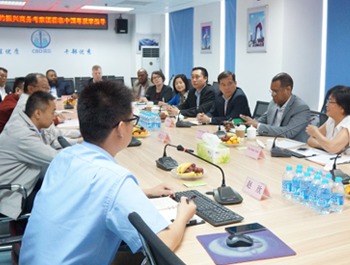Image

Christopher Kui, Executive Director, Asian Americans for Equality
Challenge: For over 30 years, low-income residents have used housing tax credits as the primary financing tool for obtaining affordable housing. But demand for tax credits outweighs their availability and creates competition, while politics and federal priorities have made their future uncertain.
Low-income housing tax credits, referred to as LIHTCs, have been the primary financing tool for the development of affordable housing over 30 years. Demand for tax credits outweighs their availability and creates competition, while politics and federal priorities have made their future uncertain. In response, community development corporations (CDCs) have turned to creative financing alternatives to fill budget gaps.
Asian Americans for Equality (AAFE) developed the first LIHTC project in New York City with Enterprise Community Partners in the early 1990s. Like other community development corporations, the organization relied on the city's process of disposing of city-owned properties to developers who would build low-income housing and keep rents affordable as a result of the "free" land awarded to them, often for as little as $1. With no real acquisition costs, sponsors could make the projects work financially and offer deeply skewed rents with maximum affordability.
As the supply of city-owned property diminished and construction and land acquisition costs rose, AAFE thought creatively about how to finance affordable housing projects and large-scale community development initiatives. Simultaneously, the City of New York introduced an ambitious 10-year housing plan to create or preserve up to 200,000 units of affordable housing, emphasizing rezoning neighborhoods to allow for mandatory inclusionary housing rather than conveying "free" land to build affordable housing. Our challenge was greater than anticipated: to fill funding gaps in our development projects to support market-rate land acquisition costs while keeping rents low.
The executive team and our small business lending arm, Renaissance Economic Development Corp., a community development financial institution, explored the EB-5 Immigrant Investor Program to finance our projects and fill our capital funding gaps through foreign private equity, while simultaneously creating permanent jobs. Job creation is a mutual goal for AAFE and the United States Citizenship and Immigration Services, which created the EB-5 program in 1990 to stimulate the economy through capital investment by foreign investors. Under the program, foreign entrepreneurs and their families are eligible to apply for a U.S. Green Card if they invest in a commercial enterprise in the U.S. (at least $1,000,000 or $500,000 if in a targeted employment area) and create or preserve 10 permanent full-time jobs. In 1992, Congress enacted the Immigrant Investor Program, also known as the Regional Center Program, which sets aside EB-5 visas for participants who invest in commercial enterprises based on project proposals that promote economic growth and are associated with approved regional centers.
 While the EB-5 program is primarily used by for-profit, private developers and municipalities to develop hotels, commercial buildings or stadiums, we explored using EB-5 to develop affordable housing and mixed-use developments that create low-income rental housing and permanent jobs. After researching other EB-5 regional centers nationally, we realized the program's potential for not-for-profit, CDC-led projects that need gap financing. Since the primary objective of EB-5 investors is to obtain a Green Card, returns on their equity investment are lower than other investment vehicles. The result is that interest rates on EB-5 loan funds are typically below market, making them attractive to not-for-profit developers.
While the EB-5 program is primarily used by for-profit, private developers and municipalities to develop hotels, commercial buildings or stadiums, we explored using EB-5 to develop affordable housing and mixed-use developments that create low-income rental housing and permanent jobs. After researching other EB-5 regional centers nationally, we realized the program's potential for not-for-profit, CDC-led projects that need gap financing. Since the primary objective of EB-5 investors is to obtain a Green Card, returns on their equity investment are lower than other investment vehicles. The result is that interest rates on EB-5 loan funds are typically below market, making them attractive to not-for-profit developers.In early 2016, with support from the Surdna and Garfield foundations, AAFE established its first EB-5 regional center in Flushing, Queens, known as the New York Renaissance Regional Center. The regional center introduces a new financing option for not-for-profit development by attracting foreign investment into mixed-use projects that promote affordable housing and community economic development. Our organization acts as an intermediary by vetting foreign investors and ensuring compliance with regulations and seeks to attract investments for our projects as well as citywide not-for-profits seeking below-market gap financing. Our EB-5 team has met with Chinese and other foreign investors willing to invest in projects that from their perspective carry less risk of non-completion due to their public purpose objective and often with government collaboration and/or partnership. Also, since many CDC projects are developed in low-income communities, they usually qualify for the lower-threshold targeted employment area investment amount of just $500,000, which also makes it attractive for a broader group of foreign investors.
While the EB-5 program has met with its share of challenges due to interpretations around the targeted employment area boundaries or stalled capital projects, Congress extended the program until September 30, 2016 to develop reforms to benefit investors and developers. EB-5 financing is an alternative solution for financing our collective mission-driven work.
The EB-5 project illustrates several important lessons:
- CDCs benefit from exploring new sources of financing for projects.
- Understanding regulations and opportunities can lead to partnerships that benefit the mission of nonprofit organizations.
- The missions of job creation and affordable housing can be compatible with investor interests.

